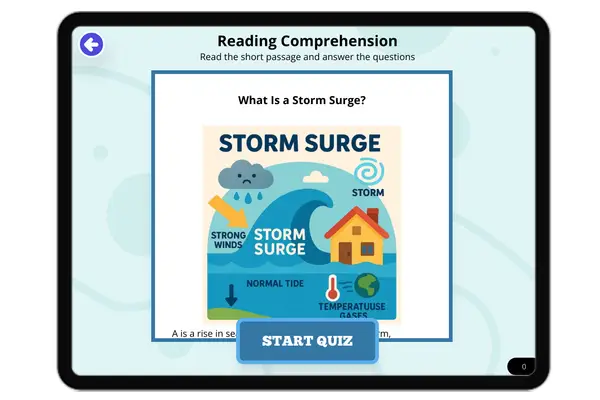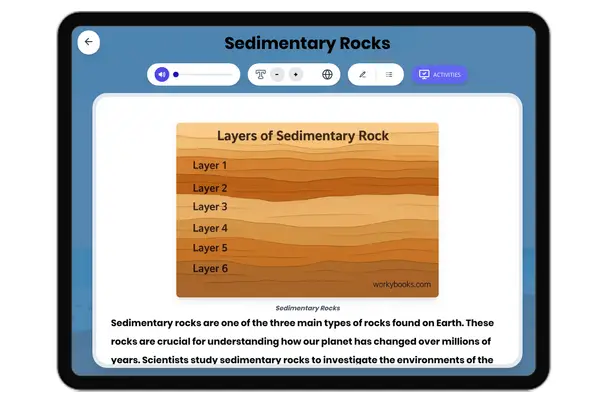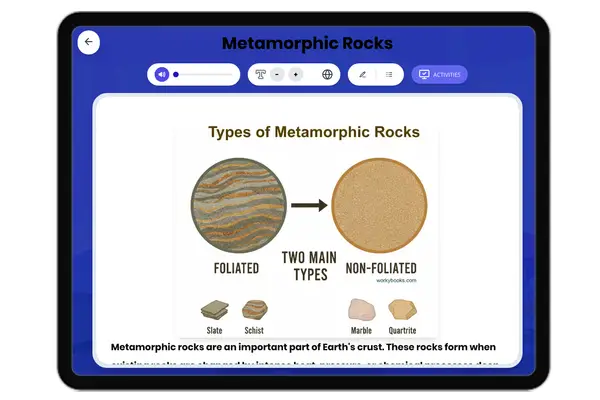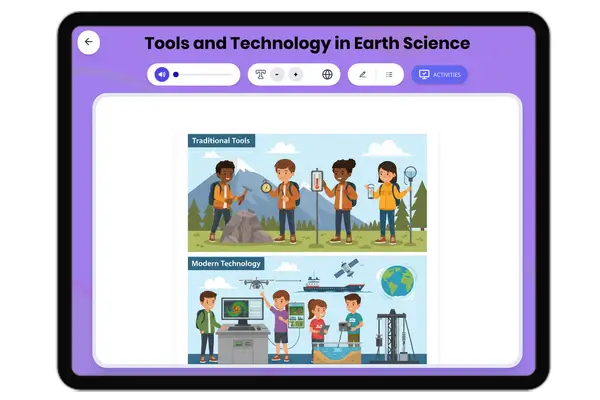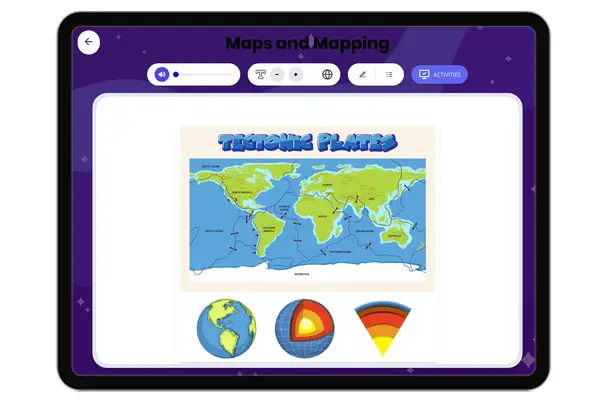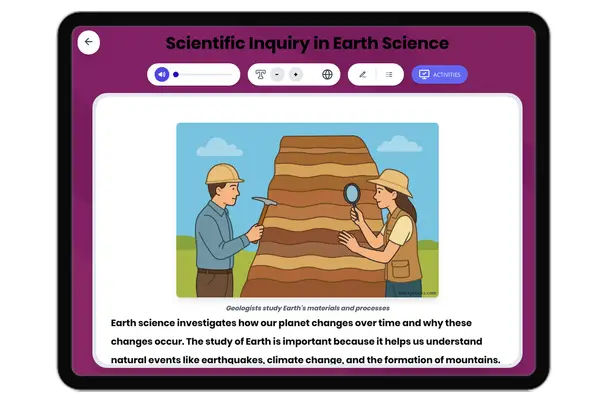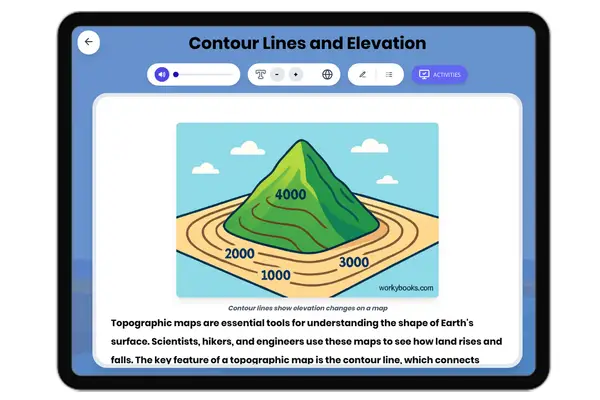Frost Wedging: How Ice Splits Rock — Reading Comprehension
Premium Resource
Grades
- 5
- 6
- 7
- 8
Standards
- MS-ESS2-1
- MS-ESS2-2
- RST.6-8.3
PRINT+DIGITAL RESOURCE
This learning resource is available in interactive and printable formats. The interactive worksheet can be played online and assigned to students. The Printable PDF version can be downloaded and printed for completion by hand.
About This Reader
This passage explains frost wedging as a mechanical weathering process. Aligned with NGSS MS-ESS2-1 (Earth’s systems) and ESS2-2 (surface processes), it details how water expansion in cracks fractures rocks. Examples include alpine landscapes (Matterhorn), road potholes, and potential Martian weathering. The text meets CCSS.ELA-LITERACY.RST.6-8.3 for sequencing scientific processes and emphasizes climate dependence (temperatures near 0°C) and rock properties (porosity). Applied connections to erosion hazards and planetary geology are highlighted.
Perfect For:
👩🏫 Teachers
- • Reading comprehension practice
- • Auto-graded assessments
- • Literacy skill development
👨👩👧👦 Parents
- • Reading practice at home
- • Comprehension improvement
- • Educational reading time
🏠 Homeschoolers
- • Reading curriculum support
- • Independent reading practice
- • Progress monitoring
Reading Features:
📖
Reading Passage
Engaging fiction or nonfiction text
❓
Comprehension Quiz
Auto-graded questions
📊
Instant Feedback
Immediate results and scoring
📄
Printable Version
Download for offline reading
🔊
Read Aloud
Voice-over with word highlighting












